
On March 30, 2016, Linkgenesis and Cimetrix hosted an Equipment Data Acquisition (EDA) standards seminar in Suwon City, South Korea to introduce equipment suppliers, sub fab component suppliers and system integrators to the concepts, history and best practices involving the SEMI EDA standards, also known as Interface A. The seminar was in response to Samsung’s EDA pilot targeted for Line 17 in Hwaseong with further rollout in Pyeoungtaek. While Interface A is being adopted in the US, Europe, Japan, and Taiwan; this is the first usage in South Korea. Recognizing this, Linkgenesis used their strong contact base in the South Korean semiconductor industry to bring together the major fab suppliers to share knowledge about EDA and demonstrate how Linkgenesis and Cimetrix can help them meet Samsung’s requirements.
The agenda was:
-
Introductions by Sungwoo Jung, CEO Linkgenesis and Eric Ko, Sales General Manager
-
EDA SEMI Standards Overview by Inhyeok Paek, Managing Director Research and Development Center
-
EDA Industry and Market Trends by Dave Faulkner, Cimetrix Executive Vice President
-
Factory Use Cases for EDA by Brian Rubow, Cimetrix Director of Client Training and Support (and co-chair of SEMI North American DDA Task Force)
-
Best Practices in EDA Implementations by Brian Rubow
-
CIMPortal Plus Feature Overview by Brian Rubow
-
Development Steps Using CIMPortal Plus by Mingyu Chung, Linkgenesis Principal Engineer
-
Question and Answer Period
With over 70 attendees, the Q&A session was lively with many good questions and exchange of ideas. Action items and next steps have been established with the attendees as everyone involved is working toward helping the Samsung pilot be successful.♦
If you would like to learn more about the application of the SEMI EDA/Interface A standards, click here for 10 in-depth videos on EDA technology. You can also download a white paper on the SEMI EDA/Interface A standards here.



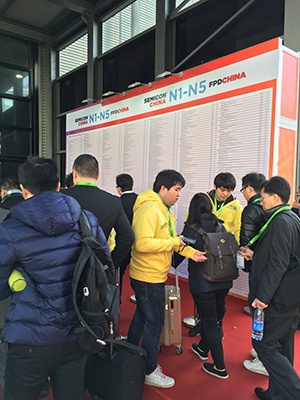
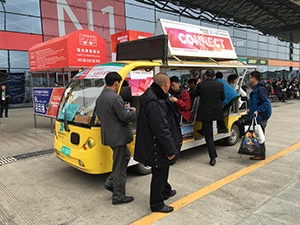
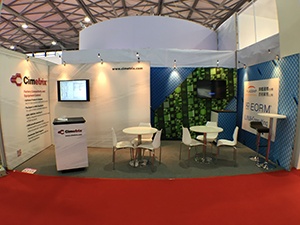






 Cimetrix and our new distribution partner, Linkgenesis, participated in a joint booth at SEMICON Korea last week in Seoul. With over four exhibit halls located in the COEX Convention and Exhibition Center, SEMICON Korea is the largest SEMICON in terms of number of visitors—about 40,000—and included over 1,870 booths in 36,000 sq. meters of show space. The theme of the show was “Connect to Future, Market, People and Technology” with keynote speakers from leaders at Synopsys, Texas Instruments, and Audi. The show was co-located with LED Korea. Included in the schedule was also a meeting for the Information and Control Technical Committee, Korea Chapter, to work on SEMI standards.
Cimetrix and our new distribution partner, Linkgenesis, participated in a joint booth at SEMICON Korea last week in Seoul. With over four exhibit halls located in the COEX Convention and Exhibition Center, SEMICON Korea is the largest SEMICON in terms of number of visitors—about 40,000—and included over 1,870 booths in 36,000 sq. meters of show space. The theme of the show was “Connect to Future, Market, People and Technology” with keynote speakers from leaders at Synopsys, Texas Instruments, and Audi. The show was co-located with LED Korea. Included in the schedule was also a meeting for the Information and Control Technical Committee, Korea Chapter, to work on SEMI standards.
 With unemployment rates at some of the lowest rates in 10 years, keeping good employees can be a challenge. Ownership in the company they work for is one benefit highly valued by many employees. We all want to be part of a growing business, make it successful, and know we will be rewarded for our hard work. Cimetrix wants to provide such ownership incentives to our employees and do it in such a way that is fair and motivating to the employees while being fiscally responsible to shareholders.
With unemployment rates at some of the lowest rates in 10 years, keeping good employees can be a challenge. Ownership in the company they work for is one benefit highly valued by many employees. We all want to be part of a growing business, make it successful, and know we will be rewarded for our hard work. Cimetrix wants to provide such ownership incentives to our employees and do it in such a way that is fair and motivating to the employees while being fiscally responsible to shareholders.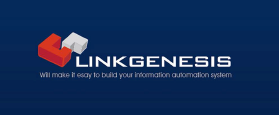
 Linkgenesis will be exhibiting at SEMICON Korea 2016, which will be held in Seoul on January 27-29. Please stop by our booth in Hall C #1739 to see our product line as well as Cimetrix’ CIMPortal Plus, and discover how our software brings the latest innovations to the semiconductor manufacturing industry.
Linkgenesis will be exhibiting at SEMICON Korea 2016, which will be held in Seoul on January 27-29. Please stop by our booth in Hall C #1739 to see our product line as well as Cimetrix’ CIMPortal Plus, and discover how our software brings the latest innovations to the semiconductor manufacturing industry.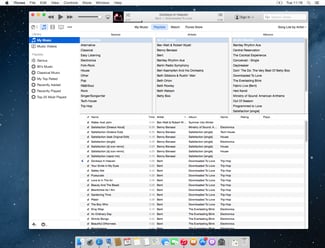
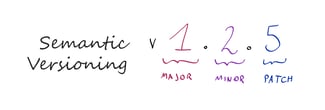 Many software companies can do this is through the way they use software versioning. It is common for software companies to use a major.minor.patch.build software versioning scheme, for example iTunes 12.3.1. This type of software versioning allows the software company to communicate the scale and impact of the changes in the release to their customers. A change in the “major” release number indicates to customers that there are some significant changes in this release that may impact the way it interacts with the product. The customer will likely need to make code changes or procedural changes when upgrading to such a release. A change to the “minor” release number denotes that there are multiple changes in the release, but customers should see only minor, or possibly no changes, in the way they use the product. A minor release may include some small new features that could potentially require code changes if the customers wants/needs those new features. A “patch” release is generally used to address a specific issue and should not change the customer experience with the software. The build number is most often provided to help the software company when researching a question or customer reported defect.
Many software companies can do this is through the way they use software versioning. It is common for software companies to use a major.minor.patch.build software versioning scheme, for example iTunes 12.3.1. This type of software versioning allows the software company to communicate the scale and impact of the changes in the release to their customers. A change in the “major” release number indicates to customers that there are some significant changes in this release that may impact the way it interacts with the product. The customer will likely need to make code changes or procedural changes when upgrading to such a release. A change to the “minor” release number denotes that there are multiple changes in the release, but customers should see only minor, or possibly no changes, in the way they use the product. A minor release may include some small new features that could potentially require code changes if the customers wants/needs those new features. A “patch” release is generally used to address a specific issue and should not change the customer experience with the software. The build number is most often provided to help the software company when researching a question or customer reported defect.


 Last fall I was invited to attend the 30th Anniversary Celebration for Rorze Corporation and their partner company ADTEC Plasma Technology. The event took place at the Fukuyama New Castle Hotel in Fukuyama, Japan on December 14, 2015. As you may know, Rorze is an official distributor of Cimetrix products in Japan so we have a long-standing relationship including Rorze handling Cimetrix products as well as being an investor in Cimetrix Incorporated itself.
Last fall I was invited to attend the 30th Anniversary Celebration for Rorze Corporation and their partner company ADTEC Plasma Technology. The event took place at the Fukuyama New Castle Hotel in Fukuyama, Japan on December 14, 2015. As you may know, Rorze is an official distributor of Cimetrix products in Japan so we have a long-standing relationship including Rorze handling Cimetrix products as well as being an investor in Cimetrix Incorporated itself.
